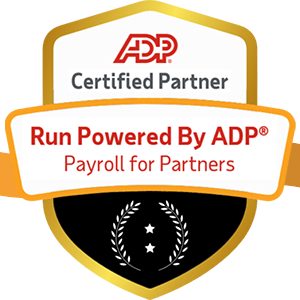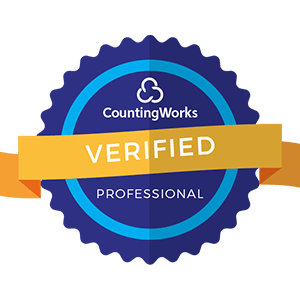
Picture this: You're running a business, juggling a million tasks, when suddenly you realize your payroll and finance departments are like two siblings who refuse to talk to each other. Sound familiar? Well, buckle up, because we're about to dive into the game-changing world of payroll and finance integration. It's not just about number crunching anymore—it's about creating a powerhouse partnership that can skyrocket your business performance.
So, grab your favorite stress-relief ball (trust us, you won't need it by the end of this article), and let's explore how turning these two departments into besties can transform your business faster than you can say "synergy."

Before we dive into the good stuff, let's talk about why payroll and finance often feel like they're speaking different languages. It's like they're from two different planets—Planet Paycheck and Planet Profit.
The Traditional Setup:
Sounds simple, right? Well, here's where it gets tricky:
Yet, in many businesses, these two crucial functions operate in silos, leading to inefficiencies, errors, and missed opportunities. It's like having a car with two engines that aren't synced—you might move, but you're not going to win any races.
Now, you might be thinking, "Okay, but my business is doing fine with things as they are." And sure, you might be chugging along. But in today's fast-paced business world, "fine" isn't going to cut it. Here's why integration isn't just nice to have—it's a must-have:
Mind-Blowing Stat: According to a report by the American Payroll Association, integrating payroll with other systems can reduce payroll processing costs by up to 20%. That's not chump change!
Okay, we know that equation doesn't make mathematical sense. But in the world of payroll and finance integration, the whole really is greater than the sum of its parts. Let's break down how this magical math works:
When payroll and finance systems are integrated, data flows seamlessly between them. This means:
Pro Tip: Look for integration solutions that offer real-time data syncing. It's like having a superpower for your business processes.
With integration, data only needs to be entered once and then flows automatically between systems. The result?
Accuracy Alert: A study by the Workforce Institute found that 49% of American workers will start looking for a new job after just two payroll errors. Yikes! Integration can help keep your talent happy and in place.
Payroll and finance are both heavily regulated areas. Integration can help you stay on the right side of the law by:
Compliance Companion: Look for integration solutions that offer built-in compliance updates. It's like having a team of legal experts on call 24/7.
When payroll and finance data are integrated, you get a 360-degree view of your labor costs and financial performance. This opens up a world of strategic possibilities:
Insight Igniter: Consider creating a dashboard that pulls data from both payroll and finance systems. It's like having a crystal ball for your business performance.
Integration isn't just good for the back office—it can boost employee satisfaction too. How?
Happy Employee Stat: According to a survey by the American Payroll Association, 69% of employees say that payroll errors would cause them financial difficulty. Integration helps ensure your employees are paid accurately and on time, every time.

Ready to embark on your integration journey? Here's your roadmap to payroll-finance nirvana:
Before you start, you need to know where you are. Ask yourself:
Pro Tip: Create a workflow diagram of your current processes. It's like having a map of where all the treasures (and pitfalls) are hidden.
What do you want to achieve with integration? Some common goals include:
Goal Getter: Use the SMART framework (Specific, Measurable, Achievable, Relevant, Time-bound) to set your integration goals.
There are several ways to integrate payroll and finance systems:
Solution Sleuth: Consider factors like cost, scalability, and ease of use when choosing your integration solution.
If you're moving to a new system, you'll need to plan how to transfer your existing data. Consider:
Migration Mantra: Always, always, ALWAYS backup your data before starting the migration process. It's like having a safety net for your business's most valuable asset.
Once you've chosen your solution and planned your migration, it's time to implement. But don't go live without thorough testing:
Testing Tip: Create a checklist of all functions that need to be tested. It's like having a pre-flight checklist for your integration launch.
For your integration to be successful, your team needs to know how to use it. Plan for:
Training Treat: Consider gamifying the training process. Who says learning new systems can't be fun?
Once you've tested and trained, it's time to launch! But your job isn't done:
Monitoring Maxim: Set up alerts for any anomalies or errors. It's like having an early warning system for potential issues.
The world of payroll and finance integration is constantly evolving. Here are some trends to keep an eye on:
AI and ML are revolutionizing how we handle payroll and finance data. Some exciting applications include:
AI Insight: According to a report by Deloitte, 42% of finance professionals believe AI will be "critical" for their future success.
While still in its early stages, blockchain has the potential to transform payroll and finance integration:
Blockchain Breakthrough: A study by KPMG found that 48% of enterprises believe blockchain will change the way they do business in the next three years.
Cloud solutions are making it easier than ever to integrate payroll and finance systems:
Cloud Conjecture: Gartner predicts that by 2024, more than 45% of IT spending will shift from traditional solutions to cloud.
With more work being done on the go, mobile integration is becoming crucial:
Mobile Mania: A survey by Emergence Capital found that 80% of the global workforce is deskless, making mobile integration more important than ever.

While we've talked a lot about systems and data, it's important to remember that at the heart of payroll and finance are people. Here are some tips for managing the human side of integration:
People Power: According to a study by McKinsey, 70% of change programs fail due to employee resistance and lack of management support. Don't let your integration be one of them!
We know what you're thinking: "This all sounds great, but what's it going to cost me?" While there's no denying that integration requires an investment, the returns can be substantial. Let's break it down:
ROI Revelation: A study by Nucleus Research found that for every dollar spent on HR and payroll technology, companies can expect an average return of $9.13. Now that's what we call a good investment!
Still not convinced? Let's look at some real companies that have reaped the benefits of payroll and finance integration:
Success Secret: While these companies saw great results, remember that every business is unique. Your integration journey should be tailored to your specific needs and goals.
As we wrap up our journey through the world of payroll and finance integration, let's recap the key takeaways:
So, what are you waiting for? It's time to break down those silos, sync up your systems, and watch your business soar. After all, in the words of Henry Ford, "Coming together is a beginning, staying together is progress, and working together is success."
Your payroll and finance departments are ready to be best friends forever. Are you ready to make the introduction?
Final Thought: In a world where data is king, integration is the crown jewel. By bringing your payroll and finance functions together, you're not just streamlining processes—you're creating a powerhouse of insights that can drive your business forward. So go ahead, take that first step towards integration. Your future self (and your bottom line) will thank you.


